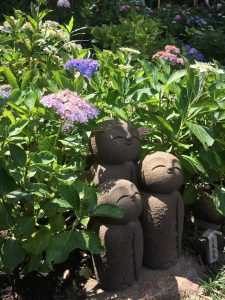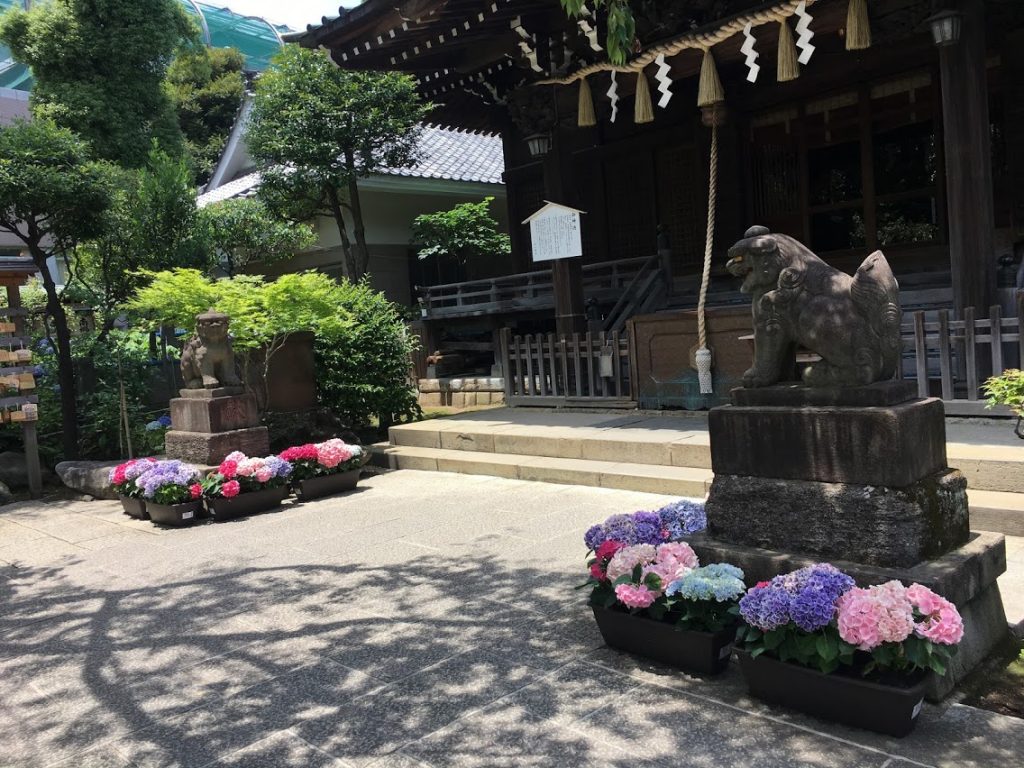When we think about famous flowers of Japan, we often first picture the sakura, or cherry blossom. The delicate sakura bloom along streets and rivers across the country, and signify the start of Spring. But what about the other seasons? Japanese culture is known for its appreciation of all four seasons. When the humidity and rains come in June, a new flower blooms to herald the coming of summer. Hydrangea is the perfect symbol of the new season, and festivals and viewing spots throughout June and July honor the seasonal hydrangea blooms. Don’t worry if you’re unable to make sakura viewing season, think beyond the cherry blossoms. There’s nothing like the beautiful rainy season hydrangeas in Japan!
History of Hydrangea
Hydrangea are native to Japan, and have been cultivated and appreciated all over the world. The flowers first showed up in Japanese literature during the Nara Period, over 1000 years ago. They started to appear in art in the 1500s during the Azuchi-Momoyama Era. Since the flowers change color depending on the soil, they began to symbolize flightiness early on in history. This made it somewhat unpopular and not a flower to give at a wedding or to a significant other! Now that hydrangea have become more appreciated, the meaning has changed and they have lost their negative connotation. Still, the flowers were pretty and easy to grow, so they were used to decorate burial sites. These sites were not fully appreciated as tourist attractions until post World War II, after the flowers had been exported and became more popular internationally. Even now tourists are able to see Japan’s magnificent hydrangea blooms in temples and shrines, thanks to their association with burials.
Kamakura – The Hydrangea Capital
Kamakura is one of the most famous hydrangea-viewing places in Japan. This oceanside town has enough to entertain visitors for a number of days, but is close enough to Tokyo for a day-trip. This town was once the capital of Japan, so there is a lot of history to learn about amongst the flowers!

The Meigetsu-in Temple, off of Kita-Kamakura Station, has another name – Ajisai Temple, or Hydrangea Temple. This zen temple has deep historical significance as a burial ground for a head of the Kamakura shogunate, so you can learn all about Japanese history while enjoying the summer flowers. They line the paths like blue clouds and present a great photo opportunity. Make sure to check out the famous round window for a perfect framing of the garden!
If you want to see the ocean, climb the busy path of hydrangea at Hase Temple. There will be a crowd, but it is well worth it to see the view of the sea, framed by the beautiful flowers.

Hydrangea at Festivals and Shrines
If you find yourself in Tokyo, check out the Bunkyo Hydrangea festival! In June, hydrangeas fill Hakasan Park and Shrine. The 3000 shrubs fill the grounds with pastel colors. Though the skies may be cloudy during this rainy season event, the weather is usually warm and humid. It’s a perfect time to buy shaved ice at one of the festival stalls and admire the flowers.

Kyoto also has shrines full of hydrangea. At Mimuroto-ji in Uji, you can enjoy the beauty of the summer season while exploring the old shrine.
The heat and humidity of Japanese summers can seem unappealing, yet it is still a time to appreciate. The beautiful rainy season hydrangeas are a magical way to bring in the summer so be sure not to miss them on your next visit to Japan.
